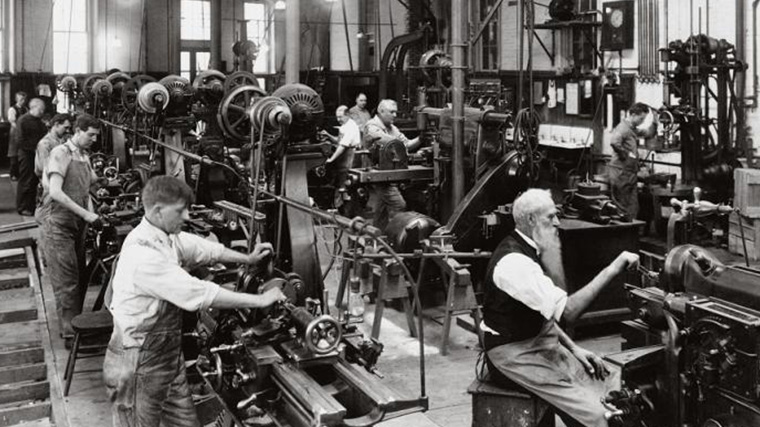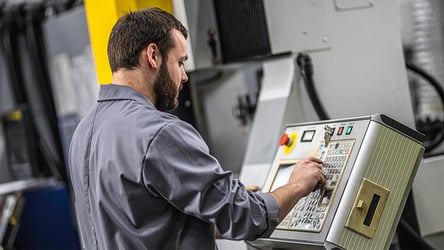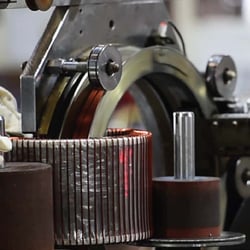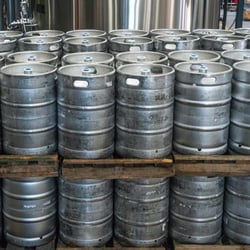Legacy factory equipment (manufacturing machines with no built-in data collection mechanism) presents a significant challenge when it comes to manufacturing data, particularly for companies that want to calculate OEE. That most basic of all manufacturing metrics isn’t the only reason manufacturing companies are eager to make older equipment IoT-compatible. Capturing the right data can transform manufacturing operations: it eases the disconnect between the factory and business processes, eliminates the lag time for management to access, analyze, and act on data, and resolves problems with planning, inventory control, the supply chain, and meeting customer expectations.
While manufacturing data collection from legacy factory equipment is less expensive than years ago, there are still many ways to go about it, and it can be complex or difficult without the right expertise. Most of all, it’s important to start with the end in mind, make a plan, and use the right approach to capture data that will properly feed your organization’s improvement program. Even executives that are far removed from the day-to-day production equipment should develop a high-level understanding of what’s involved, because the data requirements and data collection engineering will affect system implementation costs and timelines.
Capturing the Data from Older Machines
Even though we understand the mechanics of how machine data feeds the OEE metric, getting the right data out of older manufacturing equipment isn’t a quick or simple activity (although it is certainly a high-value, reasonably economical exercise).
The first step to capture the required data from legacy equipment is an industrial IoT (IIoT) device with the right connectors, protocols, and firmware in place on the machine connection side. Your operations IT and machine connectivity engineer might advise something like a Siemens LOGO! intelligent logic module, an Allen-Bradley Micro820 PLC, or a Moxa ioThinx 4530 series industrial controller. These PLCs and controllers can gather a large amount of data to feed the analytics system. This is quite different than a sensor on a machine that only monitors a single specific element, like vibration or temperature.
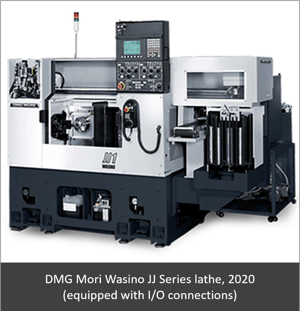
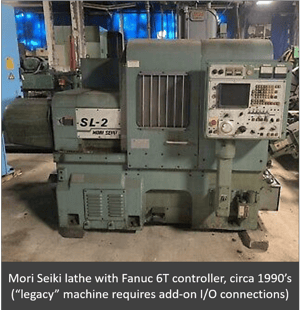
The next step in capturing data from legacy equipment is to put a suitable connection and protocol in place on the client connection side, like:
The connection will communicate or translate and transmit the data from the PLCs and controllers into the OEE system.

Finally, your company might want to consider the machines’ ability to receive signals/data and programs if recipe management and/or program transfer is a requirement. Skipping this step in the planning process may cause significant angst later if the organization decides to have data flow from other sources back into the production equipment.
There are a host of other concerns that your manufacturing IT or operations IT engineers will consider as they design how to capture data from old manufacturing equipment. These may include:
- Using devices that can connect to signal voltages of all kinds, such as TTL, 24V & 110VAC
- Polarity insensitive on the signal side to allow input power from multiple sources
- Wired Ethernet, RS232 along with digital and analog inputs/outputs
- Firmware that accepts configuration for sinking or sourcing, rising or falling edges, blinking, and signal normalization
- Onboard memory to protect against data loss in case of network or software going offline
- Support for additional plug-in peripherals such as operator HMI, barcode, or QR code scanners
Certainly, ease or difficulty of installation, reliability, cost to manufacture, and overall effort and resources required are all considerations. There is usually more than one way to get data from legacy equipment, and it’s up to your operations IT or machine connectivity expert to guide the company on the most efficient approach that meets all or most business requirements.
The Machine’s Connected, Now What?
When a company has decided how it will engineer data collection from older manufacturing equipment and gets everything connected, it’s ready to extract data for OEE and other metrics. While legacy machines cannot provide the same volume of data as newer, native IIoT-enabled machines in the factory, they can provide enough data to monitor machine efficiency and productivity using metrics like OEE and total effective equipment performance (TEEP).
Once your operations IT team gets the data flowing, it’s time to integrate into operational and improvement systems. Whether the effort to connect legacy manufacturing equipment was meant for an OEE system, a quality management system, or to feed a continuous improvement initiative, the organization can apply the data in many ways, not just for the original project.
For example, if your company has a digital transformation or Factory 4.0 initiative, you might plan to feed data into an OEE system. Once it’s up and running, why not also use the data to feed the production scheduling system? Or, if you started collecting legacy machine data to fuel the quality system and satisfy industry or regulatory requirements, what other systems might the company improve with this newly expanded data set? Finally, for companies worried about tackling the problem of capturing data from older machines, these early steps can help you decide if the effort is worthwhile:
- Follow the path of data from newer, IoT-enabled machines to understand what teams and systems might already be using the data, beyond just the OEE system. Talk with the other departments and functional leaders to find out what they use the data for, and how valuable legacy machine data might be to them.
- Engage operations IT engineers to understand if they have a machine connectivity expert on their team. If not, reach out to your OEE or MES/MOM vendor or your systems integrator to enlist help.
- Conduct a comprehensive machine audit to determine the connectivity status and needs for each machine. A detailed machine audit is so much more than simply machine ID information. It’s a detailed fingerprint that includes brand, type(s), open ports, ports in use, and so much more. The machine audit report becomes the single source of truth and provides the jumping off point as you prepare to get your machines connected.
